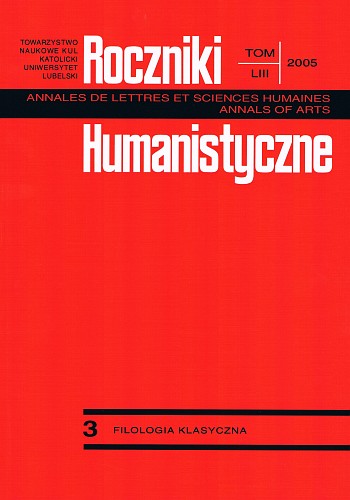Elocutio w wybranych epigramatach Janusa Pannoniusa na tle porównawczym
Elocutio in Janus Pannonius’ Selected Epigrams on a Comparative Background
Author(s): Agata ŁukaSubject(s): Language and Literature Studies, Philology
Published by: Towarzystwo Naukowe KUL & Katolicki Uniwersytet Lubelski Jana Pawła II
Keywords: Janus Pannonius; elocutio; epigram; figures of rhetoric
Summary/Abstract: The paper attempts to put some light on the question of elocutio in Janus Pannonius’ epigrams, showing means of expression he preferred, as anaphora, antithesis, comparatio, enumeratio, epitheton, sententia and synonymia. Using them, the poet easily attracts the attention of the reader and captures his imagination. Enumerationes may be often found in laudatory or thanksgiving epigrams, especially when Pannonius tries to portray a person, a thing or a situation precisely. To incite the curiosity of the reader Janus willingly uses antithesis which gives rise to tension and makes the culminating point more puzzling. Due to synonymia the poet avoids monotony and makes the description of a given object more vivid. Sententia also plays an important role in epigrams, as it first of all allows conciseness of the text and then makes the contents timeless. Means of expression enumerated in the paper were used by Pannonius more often than some others, that is why they seem to be his favourites. One must remember, however, that to meet the requirements of Renaissance poetics, as far as elocutio is concerned, the poet was naturally made to choose those means of expression, which had been typical elements of the ancient epigrams. Needless to say, only thus did he manage to deal with the principles of imitatio and aemulatio antiquorum.
Journal: Roczniki Humanistyczne
- Issue Year: 53/2005
- Issue No: 03
- Page Range: 101-121
- Page Count: 21
- Language: Polish

